I know there was some work coming in early in the ‘60s, but it was the barest minimum -- the jobs too few and far between. And like childbirth, the pain and its details are suppressed in later years, so I don’t know exactly what year the lawsuit concluded with Rahl or when Andy set out on his own to find a new agent. I know we were losing money with each lawyer who tried unsuccessfully to collect for us. And then Rahl, himself, died. After that, the case finally made it to the docket and Andy himself testified before a judge. Never was I more proud of anything he had done! He stood up and clearly told the truth. I think Rahl’s brother-in-law was there representing the studio. And when Andy sat down, the judge found for us. The entity of Rahl Studios was ordered to reimburse us, in part. That was our Pyrrhic victory.

During the remaining years of the 1960s, Andy was trying all sorts of things to get by as well as to keep himself occupied. He practiced his trumpet, took lessons in N.Y. with Roy Stevens. By 1968, almost nine years of unabated hard times under our belt, together we started teaching art classes in our basement – just to put bread on the table. That bad. Regardless of why we had to do it, all who came to these classes adored Andy, were exhilarated by the teaching they received – and at the end of each night class, they were all happy to come upstairs out of our 1847 fieldstone & hand-hewn timbers basement to gather around the old pine table where I served them my fresh-baked cakes and coffee. And always, there was continuing chatter about art.
And politics.
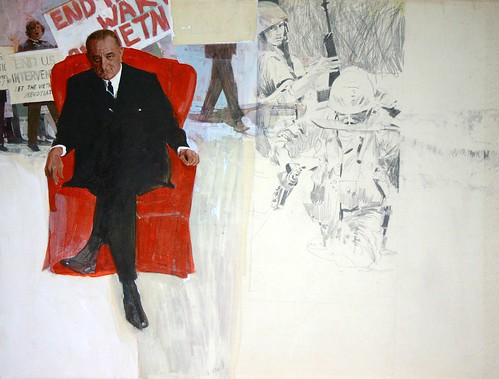
The local newspaper ran a full page spread about us and our classes.
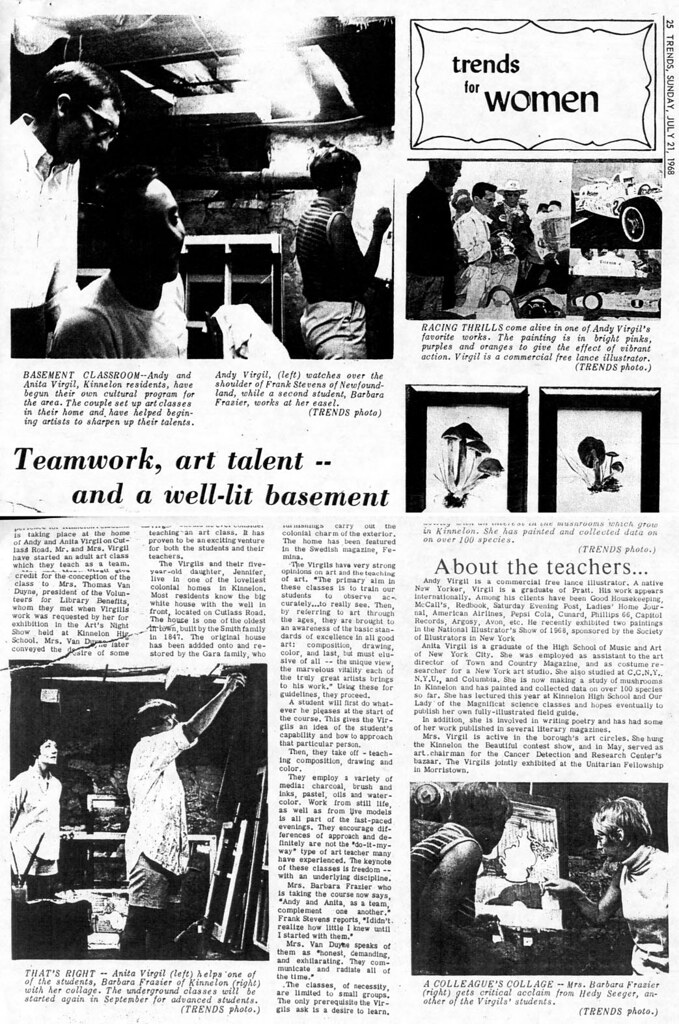
Our students ranged from three very talented 16-year olds (who declared they’d rather come to our classes than smoke pot!) to older men and women, some dilettantes, but two very serious ones later became professionals. One of those was our former pet teenager! He went into advertising art. I was stunned one day here in Virginia to receive a long distance phone call from him twenty years later! He told me he never forgot us.
 Though this art class was exhilarating for us both, it did not remove the underlying growing disillusionment that ate at our own relationship. I had begun the year before this to seriously try writing (which I’d preferred since childhood despite all my training in art). And I had also begun a series of actual-size paintings of local mushrooms that abounded in rainy 1967. I could write and still continue to care for us, for home and for a young child -- and I continued to paint my mushrooms. (Taking some to New York to obtain some reference material -- I had almost no books in the tiny library where we lived-- I was offered instead a one-woman show at the New York Horticultural Society! In 1973 I exhibited 80 of these paintings. That same year I was President of the Haiku Society of America.)
Though this art class was exhilarating for us both, it did not remove the underlying growing disillusionment that ate at our own relationship. I had begun the year before this to seriously try writing (which I’d preferred since childhood despite all my training in art). And I had also begun a series of actual-size paintings of local mushrooms that abounded in rainy 1967. I could write and still continue to care for us, for home and for a young child -- and I continued to paint my mushrooms. (Taking some to New York to obtain some reference material -- I had almost no books in the tiny library where we lived-- I was offered instead a one-woman show at the New York Horticultural Society! In 1973 I exhibited 80 of these paintings. That same year I was President of the Haiku Society of America.)But back to 1967-ish: At first I tried to do short stories for the women’s magazines in hopes of making money. Some encouragement came jotted on the rejection slips. I finally realized I wasn’t cut out for that type of writing. I turned to more serious short stories and also to poetry. By 1969 I had found my milieu and became totally and permanently involved in studying and writing haiku. Some poems written in the remaining Kinnelon years depict the grim "soul state" of that time:
bitterness
from an empty hearth
summer coolness
A rainy day --
even the toilet paper
comes to pieces!
red flipped out
chicken lung
in a cold white sink
(These are in my first collection of poems, A 2nd Flake (1974), now considered a classic in American haiku. Poems from that book have since appeared in many haiku anthologies and books on haiku, e.g. The Haiku Anthology, ed. Cor van den Heuvel, 2nd edition (Simon & Schuster, New York 1986).)

In 1970, Andy painted my portrait and Jen’s.
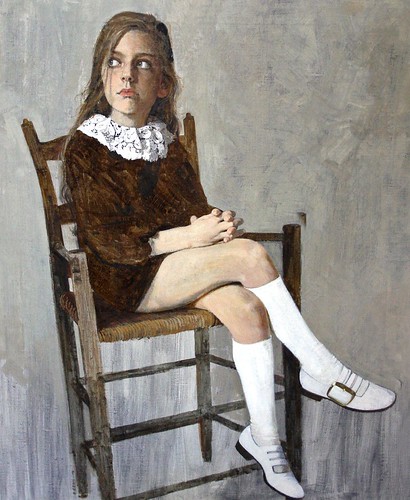
And our famous model cat who appeared in Good Housekeeping as a kitten, in a photo of our kitchen that appeared in a Swedish magazine, and in a sample that was included in a promo brochure of Andy’s.
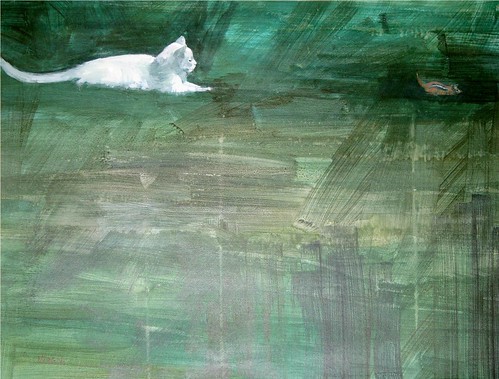
By spring of 1971 Andy was hospitalized for about a month with another unidentified lung inflammation. And by that time it was evident we had to sell our lovely house. There was no other way we could figure to obtain money enough to live on. A neighbor’s son was vacating an apartment in Montclair, so that is where we next headed.
An aside: In May 1966, our home -- and white cat -- had been featured in Femina magazine in Sweden in a piece "Over Atlanten efter ideer" or "Over the Atlantic for Ideas". Luckily, I had a Swedish neighbor who translated it all for me. One of Andy’s models, a Swedish beauty named Marika , came out to do a location shoot for Andy in a rowboat on a nearby lake. She fell in love with our house and environs of pond and woods. On returning to Sweden, she told Femina’s home decorating editor about it and one day, out of the blue, a photographer for the magazine called us from New York City and asked if he could come out to take pictures. He arrived a couple of hours later!
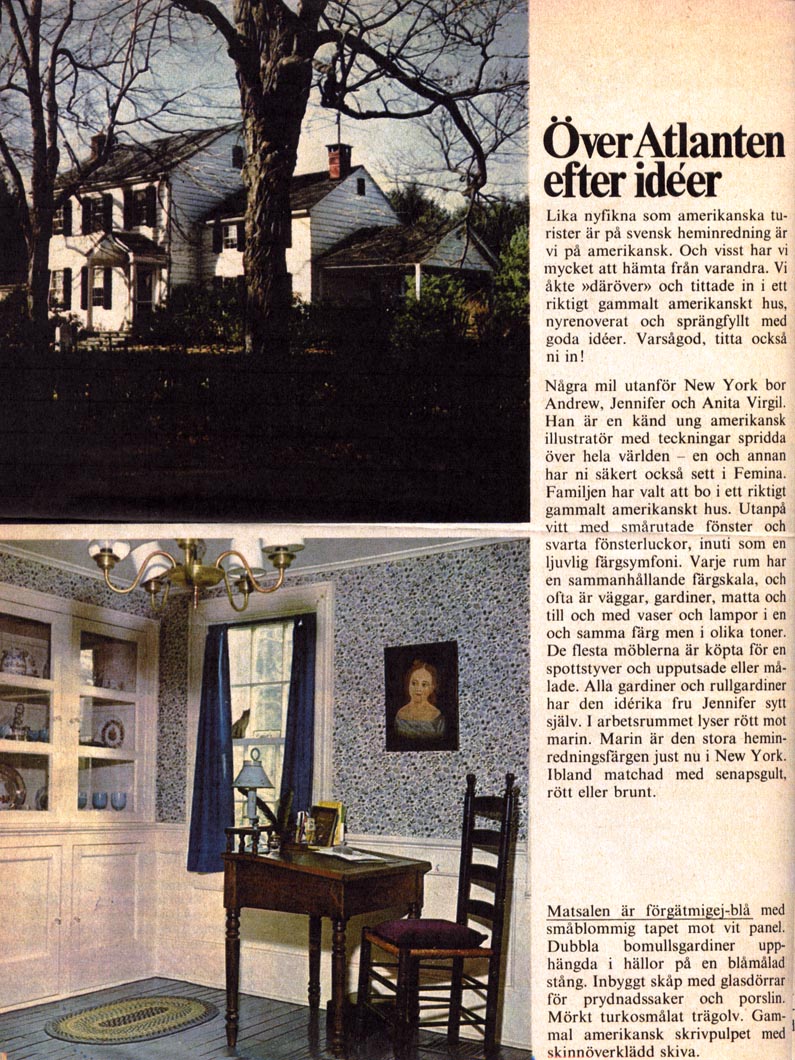
Meanwhile, about selling it: I was dealing with a nice young fellow who was my realtor. In no time, as he admired our home and its décor, we spoke more about interior decoration than about selling our house. He said he had a good friend who was an interior decorator who would love to see this place. And then he told me the guy was planning to produce a movie in New Jersey. Film? He was interested in film, too? I told him Andy had become very interested by then in studying film and had been reading up on it, hoped to take film courses at NYU. (He later did.) "Soon as Andy gets out of the hospital," I told this fellow, "we all have to get together." We did. And the three of them hit it off like gangbusters! Within the next couple of years or so they put out one wild movie that had a run on 42nd Street -- among other places. Andy was the Assistant Director. No money, but what a trip and a half that was! The director ultimately ended up in Hollywood as " a comer." I know no more.
Andy’s love of WW1 aircraft as shown in the several samples he painted of flyers and their planes
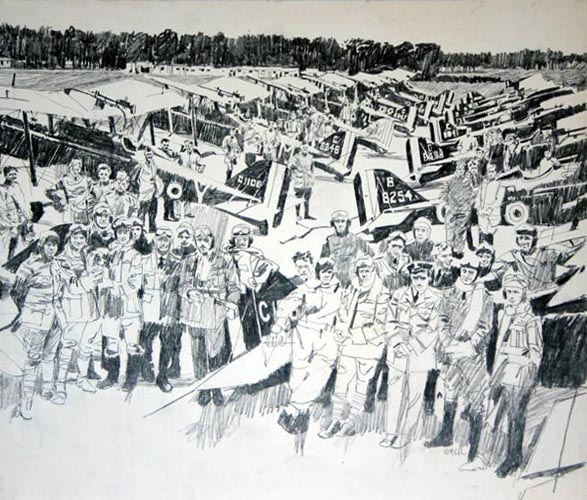
culminated in Andy’s writing a movie script on Manfred von Richthofen, the Red Baron. It was written from the German point of view. This went on for years and both of us were fascinated by what we were learning. Ultimately, he sent the manuscript to Milos Forman and did receive a very kind letter from him, though nothing else came of that.
Andy built gorgeous model airplanes, two WW1 German ones : a white Gotha bomber (its huge wingspan equal to that of a B-52) and Richthofen’s red Albatros. Years later, at his funeral, I suspended them both from the ceiling of the funeral home: the red Albatros, nose down, and the white Gotha, nose to the clouds. . . And in that room I hung his paintings to replace what was on the walls. I taped some music we loved and the funeral director had it softly playing in the background.
Andy built model race cars like those he painted samples of, made WW 2 tanks with all his own special touches – "spinach" he called these realistic additions like fabric bedrolls on the fenders with tiny leather straps he made to tie them on – those mouthwatering details a miniaturist relishes. These additions made of each a work of art.

Then he turned to doing a ship model of The Gloucester Fisherman c. 1877 -- for a year! It sits on my mantle today. Every miniscule knot authentic. He studied them in a book on knots which I still have. And all the blocks threaded properly through teeny holes Andy hand-drilled, and the rigging of fine threads ever so carefully waxed.
He continued to paint samples: John F. Kennedy, Robert F. Kennedy, Bertrand Russell, Arnold Palmer, Richard Boone, Rowan and Martin.
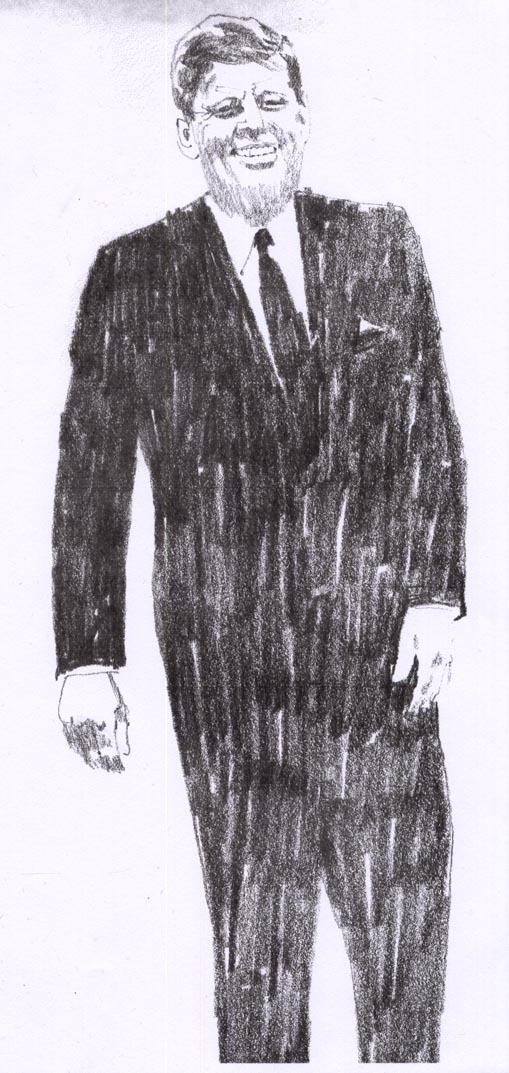
He took them around New York to try for work. He even tried doing some story boards. Colored inks on bond paper. Funny little commercials he dreamed up. One I recall was of Napoleon with his hand-- as usual -- tucked in his vest. Several frames later, when he takes his hand out of his vest, he is holding multicolored M&Ms! These story boards, alas, were ruined not long ago in a basement flood. They were stored in his huge old black leather portfolio which stood on the concrete floor. It, too, was destroyed.
For a while he was represented by artists, inc. and by artists associates but still, not very many jobs came of these affiliations. Those that came from Trans World Feature Syndicates paid ever so little for 2nd rights. Once we received a request from a magazine in South Africa. Hard-up as we were, we refused to allow them to use Andy’s work because of their long policy of apartheid.
By 1974 and for the next four years, I had to work full time while Andy served as house-husband. And he kept painting samples.

During that time the manager of the insurance company I worked for in the daytime was also involved in a dinner theater group in East Orange at night. A neighbor who lived in our apartment building invited us to a play she was in and from then on, we all became fast friends and Andy volunteered to work as an assistant director for this group. They put on "Hair." Sal Piro who later acted as the flamboyant M.C. in the film, "The Rocky Horror Show," was in "Hair" -- and happened to also be a math teacher. In the Green Room, he would coach Jenny in her algebra lessons! The group performed Neil Simon’s "Prisoner of Second Avenue," "The Fantastiques, " "When Ya Comin’ Back, Red Ryder?" and more. Andy thrived on working closely with the New Jersey actors -- in particular, Bob Ritt who not long after won Best N. J. Actor of the Year, and he especially liked working with one of the directors who later appeared as an extra -- a head shot, full screen -- as a cop in "Dog Day Afternoon;" he was in a play on Broadway with Larry Luckinbill . Many years later I saw him in several made-for-tv detective movies. Jenny even helped out with stage decorations -- she painted the floor graffiti for "Hair" one summer -- and I suggested she NOT include that in her back-to-school "What I Did This Summer" essay! I did the body painting for all the actors in it. Butterflies. They all wanted one and each night before the show, they lined up to have me do their bare bellies and arms. And Andy made one huge back-drop for them. Another wildly fun time for us. But without pay.
Enter Joe Mendola. Andy’s last rep. It was somewhere around 1978 and suddenly the clouds lifted. The siege was over, somehow, and there was work coming in just as it had so many years before.
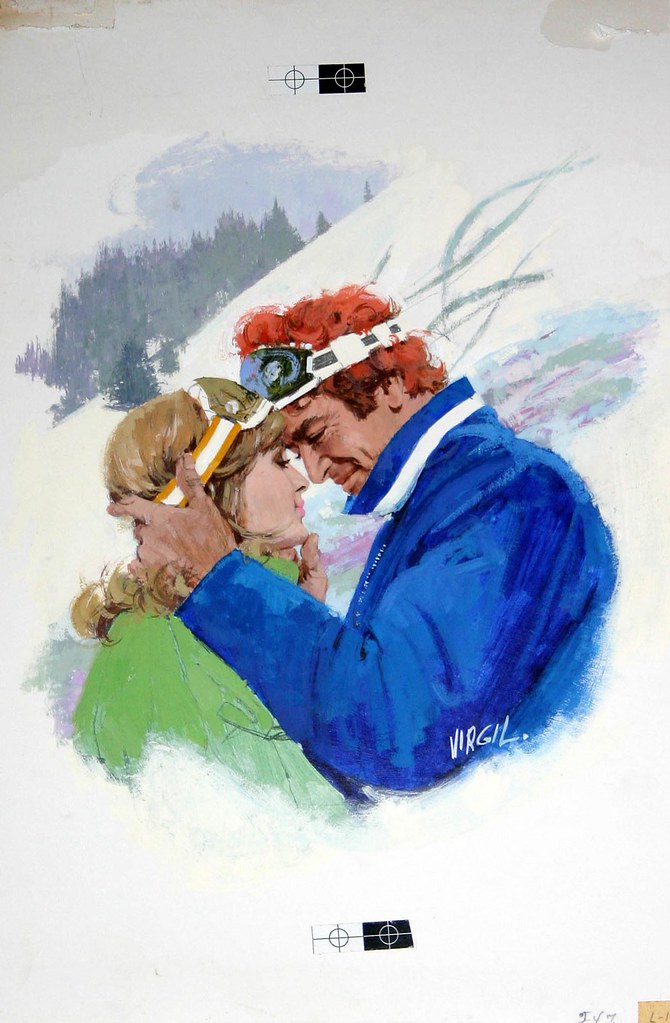

He was painting again all that year, something for Literary Guild about a hospital was one in 1979. And finally the Silhouette Romances were launched. He did about a dozen. The New York Times ran an article about their success and included one of Andy’s covers. But it was too late. Andy was diagnosed with lymphoma in 1979 and died in November of 1980.
Tomorrow: Epilogue
ACKNOWLEDGEMENTS
Here I would like to thank Leif Peng first for loving Andy’s work before he knew anything about him, and then for asking me all the incredible questions that stirred loose these memories and brought them back to the surface to be shared with others who struggle to follow their dreams. Leif has given me the greatest thing any artist thrives upon and that is complete artistic freedom. And he has provided Andy with the full recognition he always deserved.
Andy’s niece, Andrea Luciano Fehrman (who was named after Andy) found Today’s Inspiration by chance, and wrote Leif about me and wrote me about him. Without that, this story would never have been told. I shall always be grateful.
My thanks to Andrea’s mother, my sister-in-law, Ethel Luciano with whom I have also kept in touch all these years. She provided me with details of Andy’s childhood and his teenage years so I could build his story on a solid foundation of truth.
Mario Calafatello, my brother-in-law I thank for the fine photo capturing Andy playing his beloved trumpet to Jenny.
Last, my eternal thanks to my daughter, Jennifer Leigh Virgil Gurchinoff, about whom no parent could say more: she is exactly what Andy and I wanted -- but never thought we’d get. And of course it is she who photographed all of her father’s art for this and continues the line of talent with her photography, and passed the genes on to one little son who, at ten, has never stopped drawing.
Anita Virgil is an internationally anthologized haiku poet. She lives in Forest, Virginia.
Entire contents of these posts on Andy Virgil (both text and pictures) © 2007 Anita Virgil. Nothing may be reproduced without permission of the author.
* The selection of Andy Virgil's original art available from Graphic Collectibles has been expanded.
Posted at Anita's request:
ReplyDeleteDearest Anita –
After reading all seven of the installments, to quote the Brits, I’m gobsmacked. It was like reading a novel I couldn’t put down, but had to wait a day to get the next installment (and that’s from someone who knew a lot of the “story” to begin with!). You did a magnificent job and I’m so glad that it was all received so well
With love,
Andrea [Luciano]
The following is from an email to Anita and posted here with the permission of commentor Grace Marcus:
ReplyDeleteGod. I don’t know why, probably because that’s when I met you, but today’s “installment” just slays me. Especially the part of refusing work from South Africa. And those theatre nights. And the airplanes at his funeral. If the world were filled with people like Andy . . .
I loved how he was ever soft spoken, no matter what, and dignified, no matter what, and endlessly fascinated -
We shared some similar fascinations but I think I would have found him captivating anyway. He was a presence.
I was always a little in love with him, you know.
Andy’s eyes
He spoke of chainsaws and blackberries,
this man who is a friend of a friend twice removed.
Mated but fated to cross synapses with me;
to murmur softly as we sipped coffee at opposite tables.
From behind the scrim of my gaze I drank, as well, from the dark brew of his;
slaking, for a spell, my thirst for you.
Published in The Bucks County Writer, Vol.3, No. 1, Fall 2001
Yes---thank you very much Anita for not only sharing the trials & tribulations of Andy's professional life with us but the joys of your life with him as well. I think what i admire most about you was your apparent devotion through it all--- the one constant that surely allowed him to continue....
ReplyDeleteI've been married 21 years and was the househusband for a few of those at the beginning,
ReplyDeleteand have been making a good living from my art for quite some time since then...so hear hear! from me too.
yes, and you do forget about the hard times.
Eddie Campbell
well done Leif.
how do you follow this ?